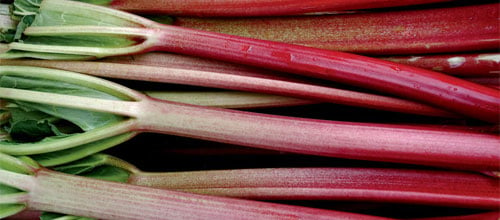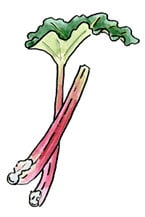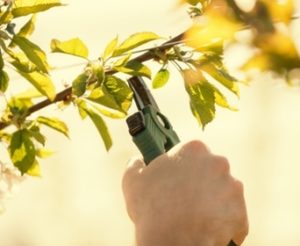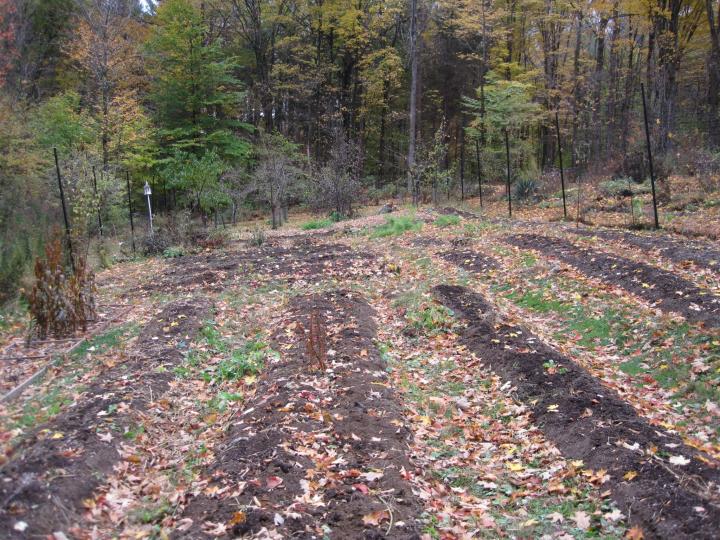Tag: farms
How To Grow Rhubarb
Rhubarb
 Chipman’s Canada Red rhubarb
Chipman’s Canada Red rhubarbRhubarb is a long-lived perennial grown for its succulent, super-tart stalks. It is usually one of the first spring foods that can be eaten from the garden and at any time of the season it provides a good excuse for making pie.
Rhubarb is one of the least demanding of all crops. Once established, there’s little work required. A happy plant will produce for decades. Grow rhubarb in full sun, in rich, lightly moist soil. In hot regions (USDA hardiness zone 6 and higher), plant rhubarb where it will get some protection from hot afternoon sun. Rhubarb will not thrive in a soggy location, where it will be susceptible to root rot, one of the few problems rhubarb can encounter. If your soil is heavy and doesn’t drain well, raised beds are a good option.
Rhubarb is a great pass-along plant. One way to get your rhubarb patch off to a fast start is to talk a fellow gardener into giving you a “chunk off the old block.” The best time to do this is in early spring before the plant’s leaves begin to unfurl. Use a sharp spade to slice down through the crown, taking out a piece with at least two pink knobs on top. You can also purchase container-grown plants from a garden center.
When preparing the planting hole, remember that this is a perennial plant that will grow for many years in the same spot. So dig a deep, wide hole (18″ deep and 18-24″ wide) and partially fill it with a 50:50 mix of compost or aged manure and good garden soil. Add a cup or two of all-purpose organic fertilizer and then place the roots in the hole and continue filling it, making sure that the buds end up 1-2″ below the soil surface.
It is important to keep rhubarb plants well-watered for the first year or two. Mulch will help to minimize water loss and maintain a more consistent moisture level. To maintain good production, add a few shovelfuls of compost around the crowns each spring.
At maturity, a rhubarb plant gets to be about 3 feet in diameter, so plant them 3 to 4 feet apart in a 3- or 4-foot-wide bed. Four to six plants will provide plenty of stalks for most families. Harvest sparingly, starting in the second year. Rhubarb sends up Jack-in-the-beanstalk like flower stalks, sometimes reaching 6 feet tall. They are decorative, but use up some of the plant’s energy. Remove the flowers as soon as they begin to form and you’ll be able to keep picking tender rhubarb stalks right through the summer and into the fall.
Is Rhubarb Poisonous?
Only the stalks of rhubarb are edible. The leaves contain oxalate, making them poisonous when consumed in large quantities.
According to the Rhubarb Compendium, you’d have to eat a lot of rhubarb leaves for it to be deadly — approximately 11 pounds. “Note that a fraction of that can cause sickness.”
 Eat the stalks, not the leaves.
Eat the stalks, not the leaves.Common-Sense Precautions
- Trim leaves from stalk right away.
- Wash the stalks before eating.
- Make sure children understand that only the stems are edible.
- Don’t let your pets eat it.
- Don’t use stalks after a frost (oxalic acid from leaves can migrate into stems).
Vegetable Garden Layout Ideas and Tips to Maximize Space in a Small Garden
Growing your own vegetables is a great way to get outside, stay active, and feed your family delicious, nutritious veggies all summer long. It’s an amazing summer hobby that will leave you happier and healthier.
But what do you do if you don’t have a lot of space? Luckily there are ways around that! Growing a beautiful vegetable garden in a small space is possible. I’m going to give you some layout ideas along with some tips for growing a lot of vegetables in not a lot of space.

Four Methods For Getting Rid Of Wasps
My Greenhouse Review (Growers Solutions)
Pulling Fence Posts The Easy Way
Introducing New Chickens With Your Old Chickens
Tips To Make Your Garden Grow…Quick!
Getting To Know Your Pyreneese
What About KuneKunes?
The Best Milk Goat Breeds For Your Homestead
The Benefits of Goats Milk
Can You Prune Trees In The Spring?
 As you’ve been admiring all the fresh green growth in your yard this spring, perhaps you’ve noticed something else, too. Like excessive growth of a tree or shrub that you want to cut.
As you’ve been admiring all the fresh green growth in your yard this spring, perhaps you’ve noticed something else, too. Like excessive growth of a tree or shrub that you want to cut.
Generally, the best time to prune most trees is when they’re leafless in winter. But as you know, with each rule of thumb, there are exceptions.
Read on to learn more about spring tree pruning.
Continue reading
LS R4047 Compact Tractor Review
1903 A.H. Patch Blackhawk Corn Sheller
Compact Utility Tractor Backhoe Operator Controls For Dummies
Fall Garden Preparation
Fall Garden Preparation

So the last of the tomato plants have withered, the pole beans have quit sprouting and you’ve carried the final pumpin out for carving. No, you don’t just walk away and bid adieu until spring. Whether you a rural homesteader or a suburban green thumb, there is still work to be done my friend! The bonus is that, depending on your location, you won’t have to be working in oppressive heat. The fall will bring the cool mornings and bug free late afternoons where you can enjoy your time prepping the ground for the next spring’s seeds. And preparation is everything for your garden. It can mean the difference between an abundent and healty harvest and the blighted jungle of a mess in your neighbor’s backyard. Here we leave a few tips and methods for you to optimize next year’s harvest.
Continue reading
LS XR4046 Tractor Review
Vegetable Gardens From The 1800s
When Rabbits Invade Your Garden
Yes, rabbits are marble eyed, floppy eared, fuzz balls of cuteness. They are fun to watch bounce across your back yard, however it is what they do when you aren’t looking that can be frustrating. They have no respect for boundaries or that garden you have been slaving away in all summer. Rabbits have two bad habits-chewing and swallowing. They love your flowers, your green beans, your blossoms. To a rabbit, rows in a garden are like isles in a grocery store. Learning early on how to prevent rabbits from gobbling up your harvest is something every gardener must to do. So to prevent them from getting fat off of your hard labor, we’ve compiled a list of tips and products designed to aide you in safekeeping your fruits and vegetables from rabbits and other garden predators. 
















